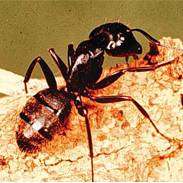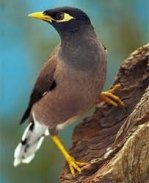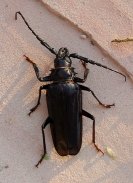



Bees and Wasps

BEES AND WASPS
BEES - There are many different types of bees. The small, black native bees are harmless and do not sting. The larger honey bees often leave commercial hives and settle in or around houses. They have a barbed stinger on their abdomen and will sting if aggravatede. Once the bee has stung, the barb is enbedded in the victim and the bee flies away . The barb is pulled from the bees abdomen resulting in its death. Bees often set up hives in wall cavities of domestic homes, unit blocks or commercial buildings. If left unattended the numbers grow quite quickly and the honey will often seep down the cavity wall creating a honey odour. The bees will often be seen entering the buildings through wall vents or cracks around windows. These situations do need treatments as the higher the number of bees the higher the risk of bee sting or attack. This can be dangerous especially for the elderly and the young. There are a number of people allergic to bee stings. R.I.P. are only to happy to assist you if bees come into your homes.
WASPS- are often confused with bees , especially native wasps. Wasps can be distinguished from bees by the narrow waist separating the thorax from the abdomen. Only the female wasp can sting, and their hollow sting also serves as an ovipositor. Unlike a bee, the wasp does not die after stinging you and may sting you several times in one attack. There are hundreds of species in Australia and all have the potential to sting.Many wasps introduce their eggs into a creature that has been paralysed and hidden away,this creature later becomming food for the larvae.
PAPERNEST WASP - There are several species which are found in most parts of Australia, Sydney and the Northern Beaches. They are the most commonly encounted wasp and are recognised by the papery nest built of wood fibre mixed with saliva. The adult is relatively large, with a slender body, tint waist and dark brown and yellow bands across the abdomen. They sting big time and their nests will often be on garden furniture, window sills, under eaves or on plants in the garden.
EUROPEAN WASP - This species is now established in New South Wales, Victoria and Tasmania and will eventially spread throughout Australia. It is a smaller wasp and is easily recognised by the bright yellow bands across the abdomen. The body is thicker and the waist wider than most other wasps. The European Wasp can sting several times and is cinsidered dangerous as it can be very aggressive. Do not risk it with these guys and contact R.I.P if you encouter this species.
Ways to keep the wasps at bay:
- Plants like thyme and eucalyptus help in repelling wasps naturally. Keep them around to minimise the chances of wasps building nests.
- Keep all your food and garbages covered to discourage wasps hovering nearby.
- You can use soapy water ( soap mixed with water ) to spray on the surfaces or on wasps.
- Avoid putting brightly coloured objects in the outdoor areas of your house.
- Switch off the lights outside your home to stop attracting them.
- We cannot stress enough on the importance of keeping your lawns and courtyards free of food and garbage. Make sure there are not any leftovers thrown around or uncovered trash cans.
- Grow plants like Eucalyptus and lemongrass, and spread them around tour house. They are known to have excellent wasp repelling properties.
- Seal away all the cracks and crevices to discourage their entry.
- Clean all the insects, their eggs and larvae from your surrounding as wasps are known to feed on them.
- Avoid approaching wasps at all cost. This could trigger their aggression and unnecessary worsen the situation by attracting more wasps.
- Call R.I.P Pest Management if you are allergic to wasps or simply want to avoid the nasty stings which might happen during DIY wasp removal methods.













